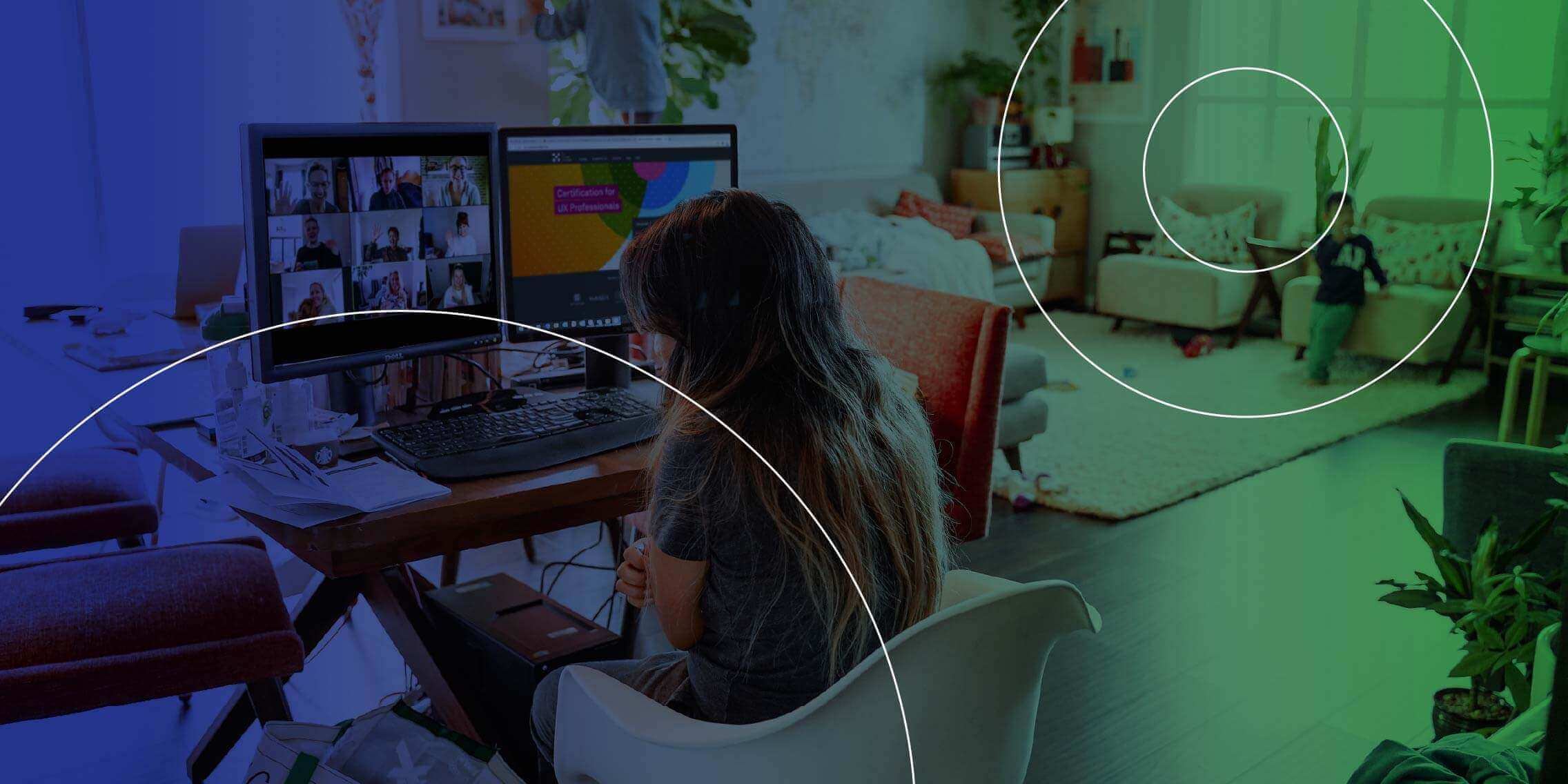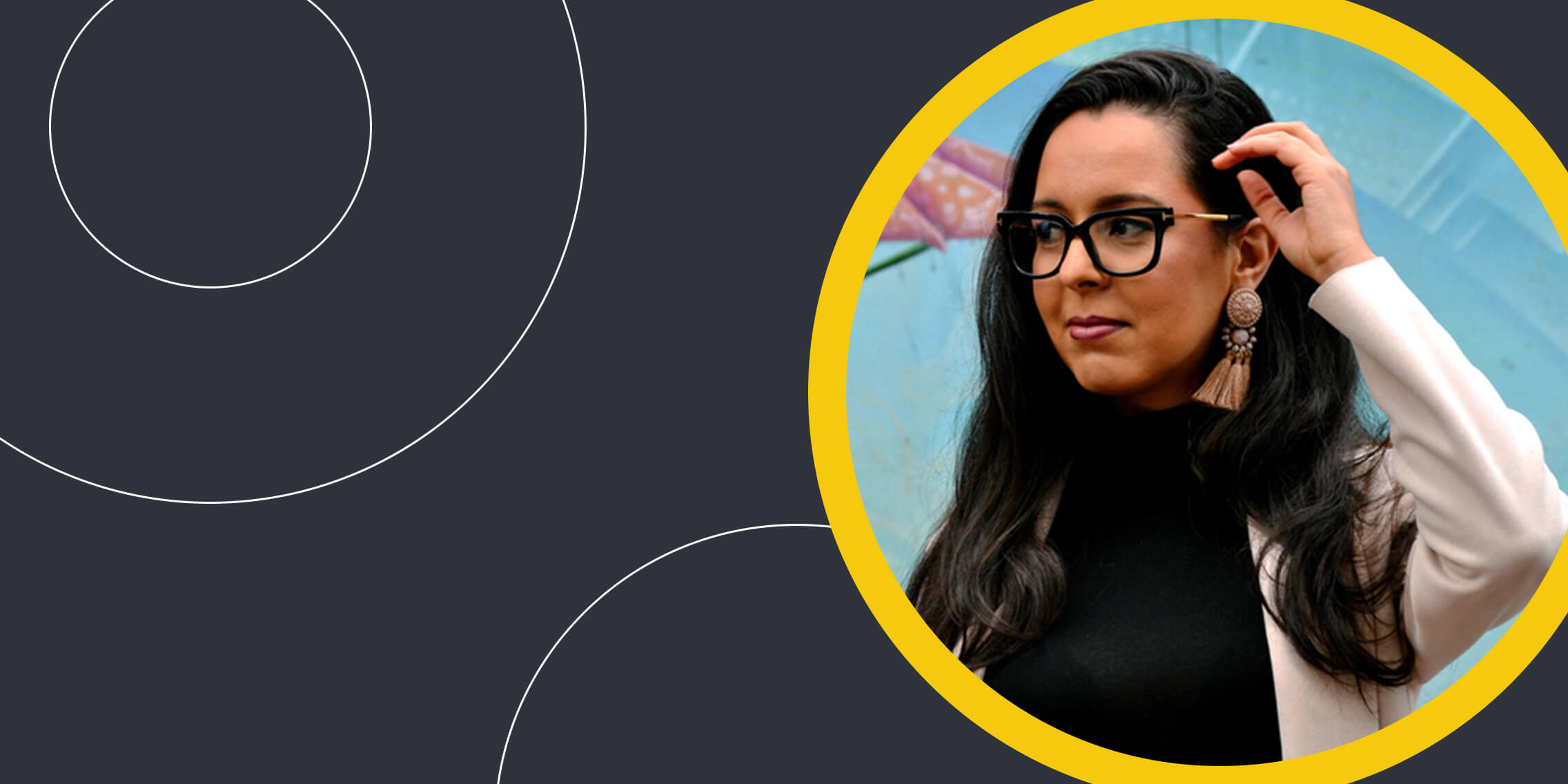In June 2020, we released our UX After Covid-19 report, exploring the impact of the pandemic on the UX industry. Almost 3 years on, many of our initial findings still hold true. At the same time, there are some new developments to be aware of. Let’s consider how the UX landscape continues to evolve amidst the pandemic.
UX after Covid-19: Where are we now? A 2023 update
When the pandemic first hit, we saw an immediate impact on the UX industry, including:
- Increased demand for UX skills
- A sharp rise in remote work
- More empathy required of UX designers
- Continued software disruption
- Fewer barriers to user research
These initial effects of the pandemic continue to shape the UX landscape today, but some of them look slightly different as the industry adapts and matures.
Here’s what UX after Covid-19 looks like in 2023.
Remote work continues, but remote collaboration is changing.
At the start of the pandemic, remote work was, in many cases, an emergency response to an unprecedented situation. Over time, remote and hybrid working models have become the new norm, requiring UX designers to rethink how they collaborate. With the arrival of new collaboration tools and features like FigJam and Huddles on Slack, UX designers are moving away from scheduled Zoom calls towards a more reactive approach to collaboration.
The proliferation of remote learning opens the door for entry level UX designers.
The global e-learning industry has seen rapid and significant growth amid the pandemic. It is now projected to reach a revised value of US$457.8 billion by 2026 (up from US$250.8 billion in 2020).
The UX Design Institute saw a 257% increase in student numbers from December 2019 to December 2021. At the same time, new online UX courses have entered the market—including Google’s UX Design Certificate and a whole host of new UX and design thinking courses on the LinkedIn Learning platform.
The proliferation of online learning is opening the door for aspiring UX designers, offering a more accessible route into the field. And, as digitalization continues to accelerate, the need for UX professionals is growing. New designers entering the field have a great opportunity to learn UX and shape the post-pandemic digital landscape.
Demand for UX professionals remains strong, especially for senior-level designers.
The pandemic created a boom in opportunities for UX professionals. While there have been some large layoffs in the tech industry in 2022, that appears to be the result of companies increasing their workforces too much during the pandemic. The demand for workers remains high and trends indicate that growth will continue, especially in comparison to levels of growth prior to Covid-19.
At the same time, remote work has broadened the job market considerably. Mid-level and senior UX designers have great leverage to move into new roles, seek more fulfilling opportunities and higher salaries, and ultimately forge a career path that works for them.
For further insights into the impact of the Covid-19 pandemic on the UX industry, download our original report, or keep reading for a summary of the main findings.
Every industry in the world has been affected by Covid-19.
While some companies are thriving in the current climate, others are struggling to survive with forced remoteness.
Industries like travel and tourism were hit hard, but with the easing of travel restrictions. Meanwhile, SaaS companies like Netflix, that saw rapid growth during the height of pandemic, have seen their fortunes ease as lockdowns were lifted. Companies quickly created or extended their online offerings when Covid-19 hit but now are finding that they can’t continue expanding at the same rapid rate as they were over the previous two years.
However the mounted pressure for online services increased focus on the value of UX, a positive sign for the future of the technology industry.
UX Designers must keep up with new trends
Companies are increasingly realising they must provide intuitive and immersive experiences to keep existing customers and draw in new ones. This has increased the demand for UX designers, but also means UX designers must stay up to date with the latest trends in technology in order to create the best user experiences.
In the next few years, UX designers will be expected to understand how to use AI to incorporate more personalization into their designs and to become more adept at designing for accessibility. In order to keep up, there will be greater demand for professional development opportunities.
To help you understand what that future will look like, we created ‘UX after Covid-19: What can we expect?’. Click here to download the report.
This report features insights from UX leaders including:
Giles is a renowned UX author, speaker and digital agency owner. He gave his perspective on the increased demand for UX services and the unique challenges faced by professionals both in agencies and in-house teams. Becca discussed how her role has evolved with food delivery service, Deliveroo and described the challenges of remote user research. She now works as a Research Manager for Meta. Gareth has worked in design performance for 20 years. He discussed how his agency has been impacted by the pandemic and potential long-term changes to the industry. Mark explores the current UX hiring climate and forecasts what UX job seekers can expect over the next year. Colman has worked in the UX industry for over 20 years. He founded the UX Design Institute in 2017 to meet the increased demand for UX professionals. He outlined why continued growth in the software industry will fuel the need for UX professionals.
Giles Colborne

Becca Finnegan

Gareth Dunlop

Mark Campbell

Colman Walsh
Main findings include:
More demand for UX skills.
Demand for UX and digital services will increase as companies expand their online offering. With the total number of internet users around the world growing by 301 million since April 2019 (We are Social), both in-house teams and agencies will be under pressure to timely deliver services.
Colman Walsh (CEO, UX Design Institute) believes “it’s hard to think of an industry that won’t be revolutionised by software in the near future – just look at the transformation of the finance, healthcare, travel and entertainment industries, among many others.”
The UX Design Institute saw a 220% increase in student numbers from April 2019 to April 2020, indicative of the wider growth of the UX industry.
Projects determined by talent not location.
Practicing remote UX will become more commonplace, with increased collaboration across different time zones and disciplines. As this way of working becomes more accepted by employers, employee location won’t hold as much power in hiring going forward.
Mark Campbell (User Experience Consultant, Morgan McKinley) comments that “when it comes to UX and design in general, collaboration is so important. You really do that better in person but you don’t have to do it in-person.”
More empathy required.
UX will continue to develop as a cross-functional discipline. UX professionals must practice greater empathy with different teams, from IT to marketing.
Giles Colborne (CEO, cxpartners) stresses that “UX designers need to empathise with the technical architects of a product as much as the end user. If they don’t have that ability, they need to learn it quickly.
Continued software disruption.
Industries slow to embrace technology must evolve their online model to remain competitive or risk becoming obsolete. UX is now viewed as a competitive advantage.
Gareth Dunlop (CEO & Founder, Fathom) thinks this is already clear: “Amazon is winning big because for 25 years it’s been doing experience really well, Zoom is winning big because its platform is easier to navigate than its competitors.”
Fewer barriers to user research.
As remote user research and remote UX tools become more ingrained in UX practice, it will become easier to conduct remote usability tests. Plus, many participants may find remote user testing more convenient. However, this brings new challenges for user researchers.
Becca Finnegan (Research Manager, Meta) explains:
with user research you gain a lot from being in the same room as someone. As a researcher it’s your job to break down the walls a bit. It’s easier to do that in person.
Interested in learning more about how Covid-19 will impact the UX industry?




